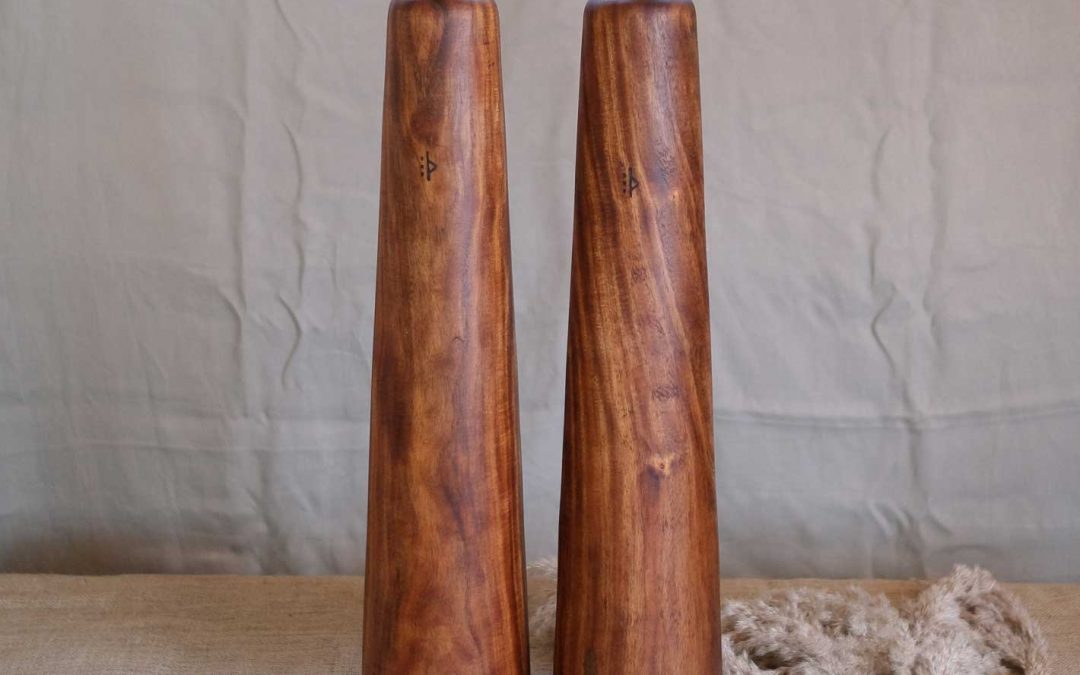The Indian jori might look a bit similar to Persian meels, but there are big differences to the way they are used – for good reason. Both practices started during the 13th century, but from very different parts of the world. While Persian Meels come from Pahlevani and zourkhaneh training practiced by warriors in Iran (Persia), Joris originated in India as part of the traditional exercise regime in the Indian akharas (kushti wrestler gym). Akharas have been in slow decline in India, though recent interest from around the world seems to be feeding a resurgence in the art.
Both meels and joris tend to weigh from 2-20kg each, even heavier. However, the shapes are quite different. The Indian jori tends to be a longer, often narrower cone shape with a wide flat base, while Persian meels appear more squat in comparison with their rounded base. Timbers used also vary and this is most likely due to raw materials available at the time. In India, joris often have just one band near the base in order to accommodate a weighted metal collar to increase the torque.
So how does that affect the swing? Well, you need to think in terms of torque and leverage. Torque is generated by weight multiplied by distance from the grip. So, an Indian jori has more of its mass at the end of the club which will feel more challenging than swinging a meel of the same weight. This not taking anything away from Persian meels. Far from it, they are awesome training tools, and just respond to movement differently compared to the jori.
It is worth mentioning that these clubs aren’t for fancy moulinettes! They are for developing whole body strength. The larger pommel size on a jori is there to keep the club from slipping, especially through the power stroke when driving the jori back to the rack position. You are as strong as your weakest link and the grip needs all the help it can get when swinging heavy. Wrestlers tend to use weights between 8-20kg each jori though they will have conditioned themselves with much lighter clubs first before even attempting this weight. We must remember that connective tissue takes much longer than muscle fibre to respond to strength workouts like these.
The practice of Indian Jori swinging may look similar to regular meel casts, but there are arguable differences from both camps. For the longer Jori, swings tend to involve more rotation in the shoulders than when casting a Persian meel of similar weight. This requires a huge effort from the core as well as shoulder and arm.
Around India, festivals are held where individuals compete with each other for endurance and strength swinging. Some jori even have nails embedded in them to enforce no contact is made in sliding or resting on the shoulders. I was lucky enough to experience jori swinging in the akharas of Varanasi back in 2018. Thankfully, some lighter ones, without nails were on hand. I am really proud to have finally added the Indian Jori shape to our collection of training clubs and tools of the world.








Comments 3